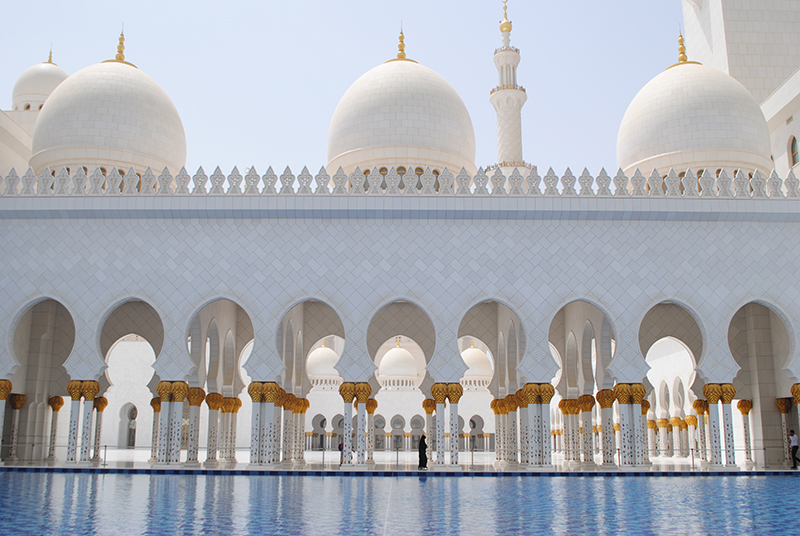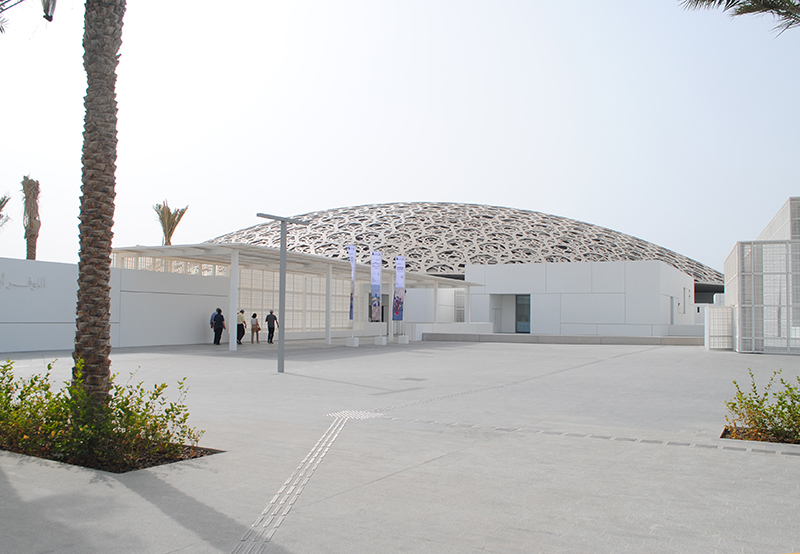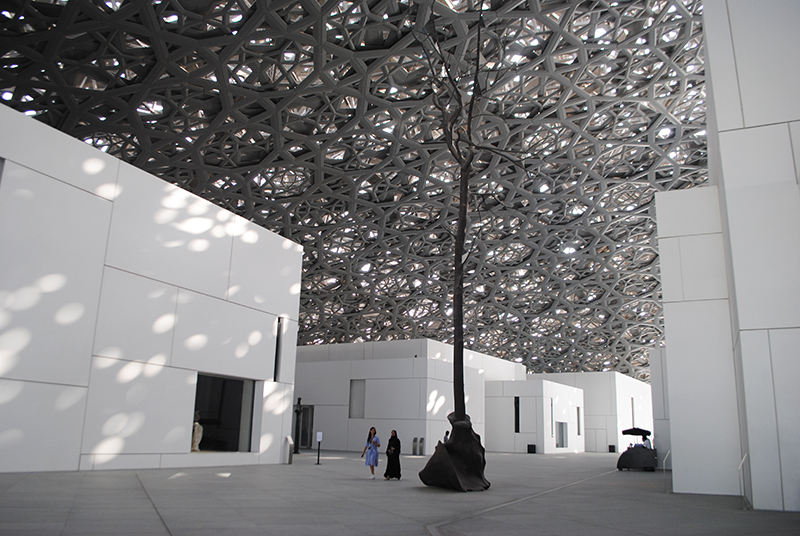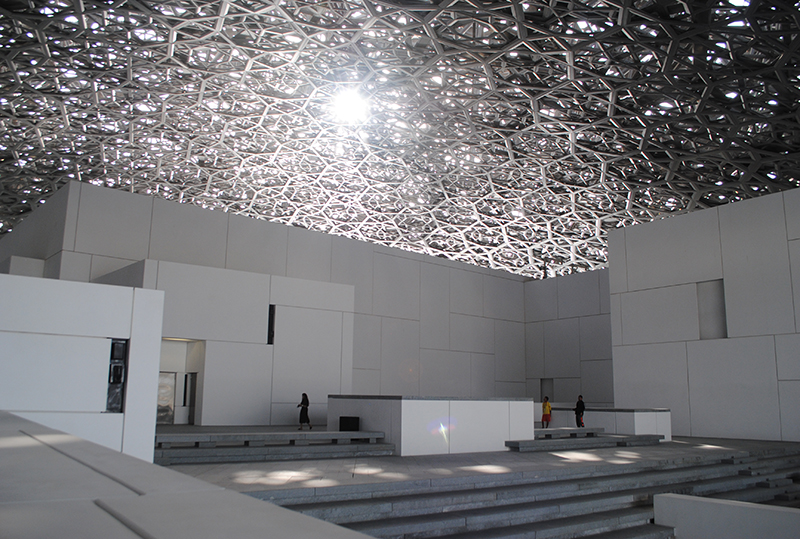Abu Dhabi is one of the seven United Arab Emirates. It is the second-most populous, only after Dubai, and the largest one in terms of area. Even though Dubai is a popular international destination, over the past years Abu Dhabi has been highly investing in touristic attractions. Some examples are the Louvre Abu Dhabi, the Ferrari World Park and the Sheikh Zayed Grand Mosque.
This is the Louvre’s first branch outside of France. Apart from the original museum in Paris, there is the Louvre Lens, designed by japanese firm SANAA and located just one hour by train from the city of lights. Louvre Abu Dhabi was designed by french architect Jean Nouvel.

The Louvre Abu Dhabi is set in the artificial island of Saadiyat (which literally means “happiness Island”). This built archipelago will futurely house a Guggenheim museum, a design by Frank Gehry, and the Zayed National Museum, by Foster and Partners.

The most symbolic element in Nouvel’s project is the majestic dome. Despite weighing over 7 thousand tons, the structure seems to float. The dome has a diameter of 180 meters and consists of 8 layers of metallic structure with geometric perforations shaped like stars. These holes allow filtered light beams to pass through. The generated effect is known as a “rain of light”. The architect says he was inspired by Abu Dhabi’s palm tree leaves, yet it reminded me rather of the muxarabi balconies, typical of the islamic architecture. Regardless of the reference, this is surely the most fascinating element in the project.
 In addition to its beauty, this solution provides a shadow which shields both the visitors and the museum’s collection from the heat. The dome covers most of the 55 blocks, 23 of which are exhibition galleries. Furthermore, there is also an auditorium, a children’s museum and a research center.
In addition to its beauty, this solution provides a shadow which shields both the visitors and the museum’s collection from the heat. The dome covers most of the 55 blocks, 23 of which are exhibition galleries. Furthermore, there is also an auditorium, a children’s museum and a research center.
The museum’s plan consists of separate blocks with white claddings, thus resembling the urban morphology of the medinas, islamic historic centers formed by a system of narrow alleys. The exhibition rooms have large windows and skylights that allow natural light to come in and, from the inside, the visitor is able to admire the museum’s architecture. At the end of the exhibition promenade, we reach the outdoor patio, which is covered by the dome.
Another symbolic element is the reflecting pool. Not only does the pool mirror the roof’s geometric design, but it also helps to cool down the local temperature.
 Jean Nouvel’s project addresses several traditional elements of Islamic architecture (geometry, horizontality, the rain of light, the water, the patio) and combines them with contemporary design, materials and technology. The result is both harmonious and dazzling. A truly unforgettable visit.
Jean Nouvel’s project addresses several traditional elements of Islamic architecture (geometry, horizontality, the rain of light, the water, the patio) and combines them with contemporary design, materials and technology. The result is both harmonious and dazzling. A truly unforgettable visit.


